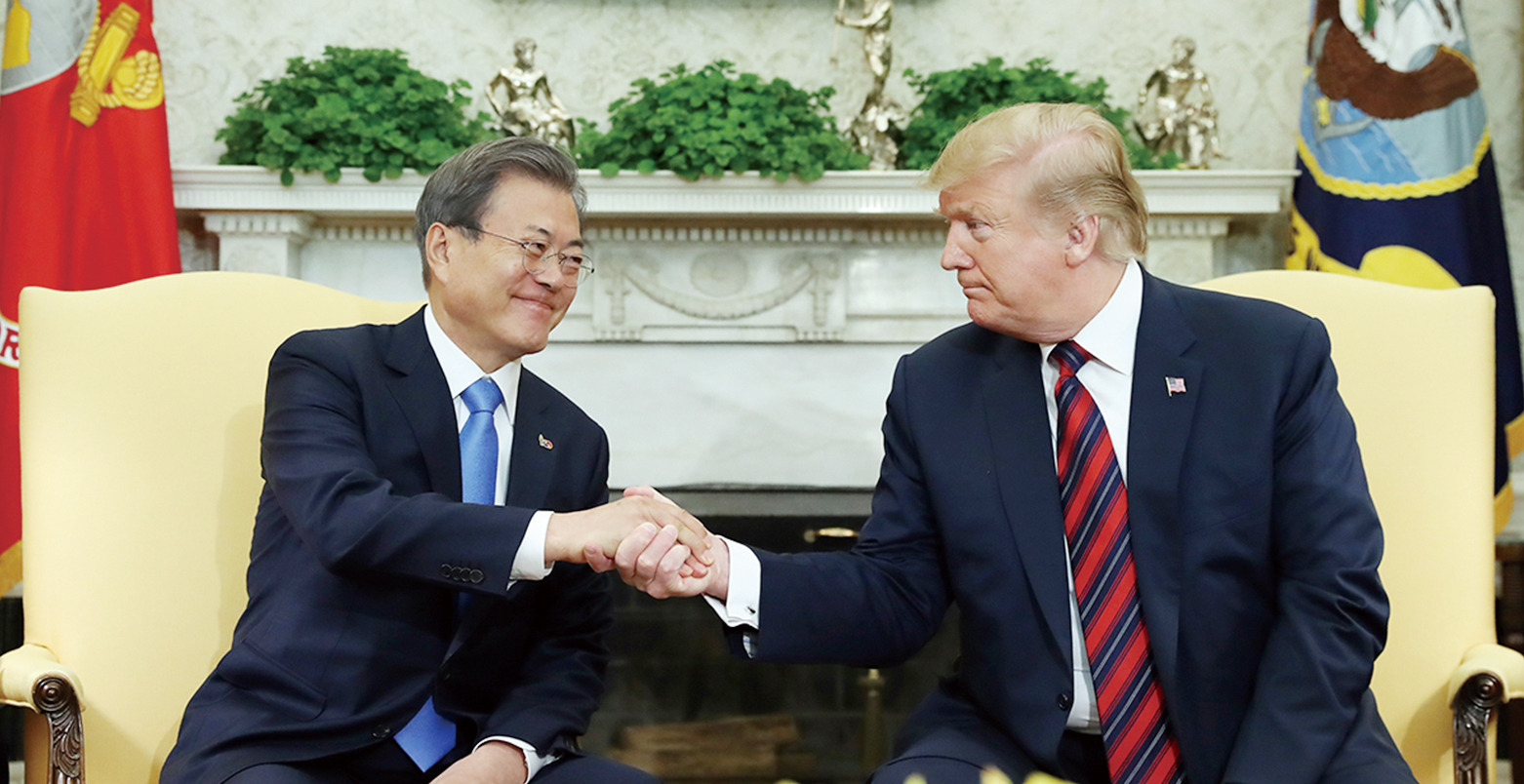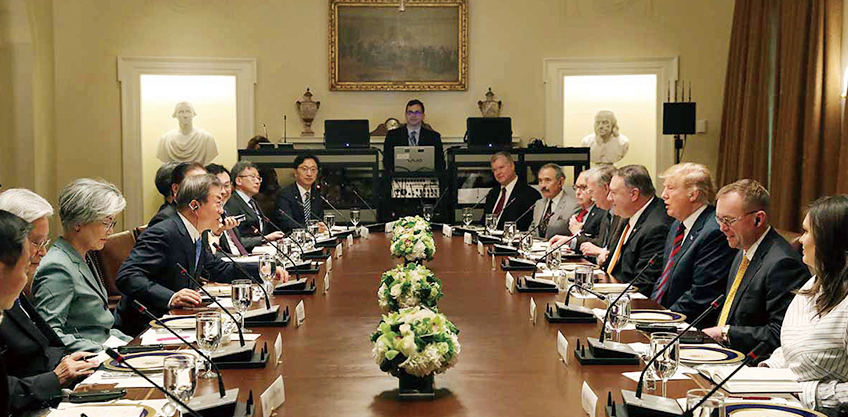
Contents










Current Korea · Written by Sohn Ji-ae Photo courtesy of Cheong Wa Dae
Shuttle Diplomacy in Action
As denuclearization talks between North Korea and the U.S. have faltered since their
unsuccessful February summit in Hanoi, Vietnam, President Moon Jae-in is busy
shuttling between both sides to get such dialogue back on track.

President Moon Jae-in (left) on April 11 shakes hands with U.S. President Donald Trump at the White House in Washington D.C.
Uncertainty looms over the political situation on the Korean Peninsula. Relations between North Korea and the U.S. have withered since their February summit in Hanoi, Vietnam, saw both leaders walk out without an agreement. Talks on denuclearization between the two countries have faltered and the prospects of renewed dialogue remain dim.
Though U.S. President Donald Trump insisted that “great progress” had been made over the past few years and that he stilll had a “great relationship” with North Korean leader Kim Jong Un, fear persists that the stalemate might reach the point of no return.
President Moon Jae-in’s visit to the White House from April 10-11 thus represented an urgent effort to resume the stalled talks. In a summit, he convinced Trump that the Hanoi summit was “not a source of disappointment, but actually part of a bigger process that would lead to a bigger agreement.”
Dialogue Door Remains Open
Under the incumbent South Korean and U.S. administrations, considerable progress has been made in the peace-building process on the Korean Peninsula with three inter-Korean summits and two meetings between North Korea and the U.S. President Moon said Seoul and Washington must stick to their strategy of maintaining dialogue momentum and remaining open to further engagement with Pyeongyang.
Trump also signaled his willingness to renegotiate with the North and implied the potential for a third summit with Kim, and even a three-way summit among both Koreas and the U.S.
To maintain a favorable environment for nuclear talks, President Moon and Trump agreed that a top-down approach would continue to be indispensable in the peace process.
Finding common ground in the peace process, however, will be far from easy for the North and the U.S. Kim wants partial relief from sanctions in exchange for closing parts of the North’s main nuclear facility, while Trump advocates “a big deal” by demanding Pyeongyang’s commitment to complete and irreversible denuclearization before any sanctions are lifted. This difference of opinion is the main cause behind their deadlock.

President Moon Jae-in on April 11 holds an expanded summit with U.S. President Donald Trump at the White House.
Bridging Differences
Compromise is required for the ultimate goal of complete denuclearization of North Korea. This could come in the lifting of minor sanctions in return for Pyeongyang taking incremental steps toward nuclear dismantlement.
The good news is that an upbeat mood is apparent in nuclear diplomacy between Pyeongyang and Washington. Kim recently announced that he is open to a third summit with Trump and acknowledged a “strong” personal relationship with the U.S. president. Yet the North Korean leader set the end of this year as a deadline for Washington to “offer mutually acceptable terms for an agreement to salvage the high-stakes nuclear diplomacy.”
The previous method of each side unilaterally pushing its demands no longer works, as it might lead to shutting down dialogue altogether. North Korea and the U.S. must thus put aside their hostile rhetoric and find areas of compromise acceptable to both sides.

President Moon Jae-in and first lady Kim Jung-sook on April 11 walk with U.S. President Donald Trump and first lady Melania Trump along the Colonnade of the White House.
Given the urgent need to resume the stalled denuclearization talks, President Moon’s role as a shuttling mediator between the North and the U.S., which he has played since taking office, has never been more crucial.
The April summit in Washington has fueled expectations of a fourth inter-Korean summit, a third meeting between the North and the U.S., and even a tripartite summit among the three parties. Thus the South Korean leader is the prime mover who can mediate and facilitate nuclear negotiations between Pyeongyang and Washington, and how he plays this role could serve as the legacy of his presidency.
Other Articles















